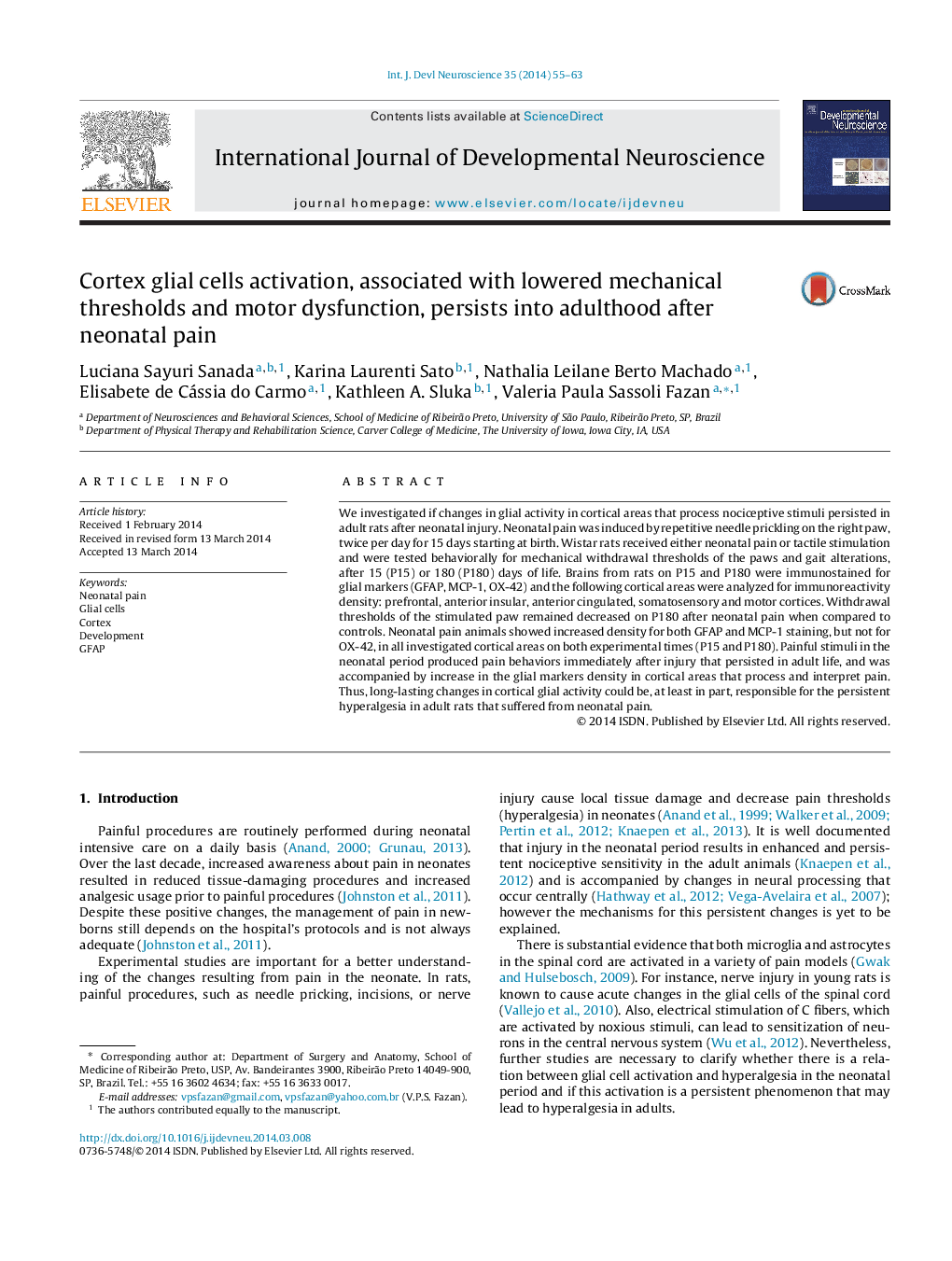| کد مقاله | کد نشریه | سال انتشار | مقاله انگلیسی | نسخه تمام متن |
|---|---|---|---|---|
| 2785993 | 1568396 | 2014 | 9 صفحه PDF | دانلود رایگان |
• Sensory-motor development was affected by pain in neonatal period.
• Adult gait was persistently altered after pain in the neonatal period.
• Neonatal pain changed cortical glial activity acutely and permanently in adult life.
We investigated if changes in glial activity in cortical areas that process nociceptive stimuli persisted in adult rats after neonatal injury. Neonatal pain was induced by repetitive needle prickling on the right paw, twice per day for 15 days starting at birth. Wistar rats received either neonatal pain or tactile stimulation and were tested behaviorally for mechanical withdrawal thresholds of the paws and gait alterations, after 15 (P15) or 180 (P180) days of life. Brains from rats on P15 and P180 were immunostained for glial markers (GFAP, MCP-1, OX-42) and the following cortical areas were analyzed for immunoreactivity density: prefrontal, anterior insular, anterior cingulated, somatosensory and motor cortices. Withdrawal thresholds of the stimulated paw remained decreased on P180 after neonatal pain when compared to controls. Neonatal pain animals showed increased density for both GFAP and MCP-1 staining, but not for OX-42, in all investigated cortical areas on both experimental times (P15 and P180). Painful stimuli in the neonatal period produced pain behaviors immediately after injury that persisted in adult life, and was accompanied by increase in the glial markers density in cortical areas that process and interpret pain. Thus, long-lasting changes in cortical glial activity could be, at least in part, responsible for the persistent hyperalgesia in adult rats that suffered from neonatal pain.
Journal: International Journal of Developmental Neuroscience - Volume 35, June 2014, Pages 55–63
